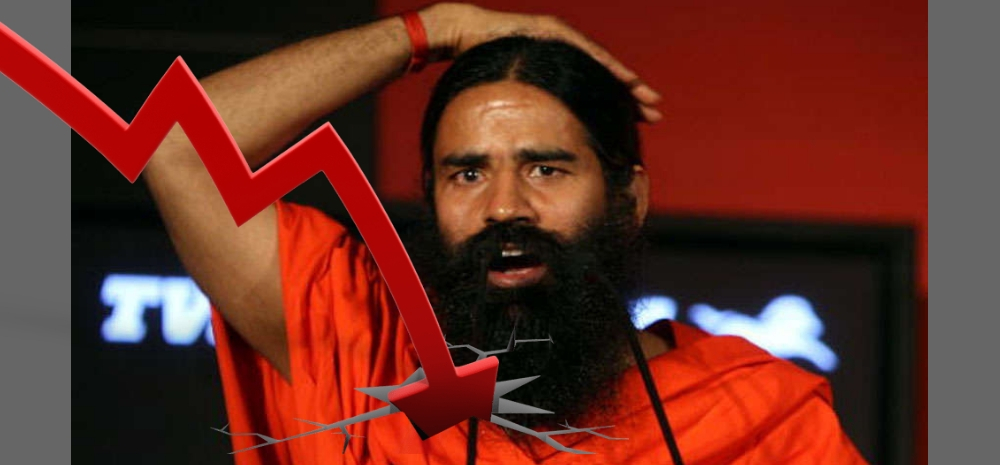Patanjali’s Make in India Dream Crashes – This Is Why Patanjali Suffered 1st Sales Drop In 5 Years
In 2016, Patanjali had ambitious plans to cross Rs 20,000 annual revenue. What has happened suddenly?

Patanjali, one of the most vocal propagators of Make in India vision has suffered its first revenue drop in the last 5 years.
What has suddenly happened in Patanjali? Has Make in India vision failed?
Patanjali: 1st Revenue Drop In 5 Years
As per a report by Care Ratings (reported by Bloomberg), Patanjali’s standalone consumer goods revenue has dropped for the first time in last 5 years.
For the financial year ending March, 2018, Patanjali reported revenues of Rs 8148 crore, which is a decline of 10%, compared to last year.
During FY2016, Patanjali had reported revenues of Rs 10,000 crore, and Baba Ramdev, co-founder of Patanjali had declared that they will cross Rs 20,000 crore revenues in next 5 years, and defeat Unilever, the FMCG behemoth which is #1 in India.
This declaration seemed possible as well, because of the stunning rise of the brand Patanjali. In FY2012, they reported revenues of only Rs 500 crore, which jumped to Rs 10,000 crore in FY2016. In 2016, they grew by 146%, and became the #1 advertiser on TV.
Assocham declared them as India’s most disruptive FMCG company.
In 2017, Patanjali CEO and Co-founder Acharya Balkrishna was reported to have assets worth Rs 70,000 crore, which made him richer than Bharti Airtel founder.
Then, what has happened suddenly?
Patanjali’s Growth Stopped By GST
Goods and Services Tax or GST regime came into force last year, and as per the report by Bloomberg, Patanjali’s downfall happened due to GST.
It seems that the massive changes in tax filing introduced by GST stopped Patanjali’s growth rate, and their revenues fell for the first time since 2013.
Patanjali failed to update their backend process with GST’s new updates, and their entire supply chain collapsed. Products remained unsold, and revenues dropped.
The report said, “The decline was primarily because of its inability to adapt in time to the goods and services tax regime and develop infrastructure and supply chain.”
Patanjali’s Damage Control
However, Patanjali will not lie low.
As per Patanjali’s spokesman SK Tijarawala, their company along with the distributors are now swiftly transitioning to the new indirect tax system of GST.
Before, Patanjali relied on exclusive partners across every nook and corner of the country, but now, they are partnering with large distributors, who have handled massive volumes of Unilever and ITC. This is making their supply chain stronger.
Besides, they are also expanding their verticals – Recently they launched their first clothing chain, called Patanjali Paridhan, which aims to target the fashion and apparel industry.
Issues like debt-fuelled expansion, increased overhead costs, uneven incentives, ground-level management do exist, but with supply chain sorted out, Patanjali can hope to cover this year.
We will keep you updated, as more details come in.
